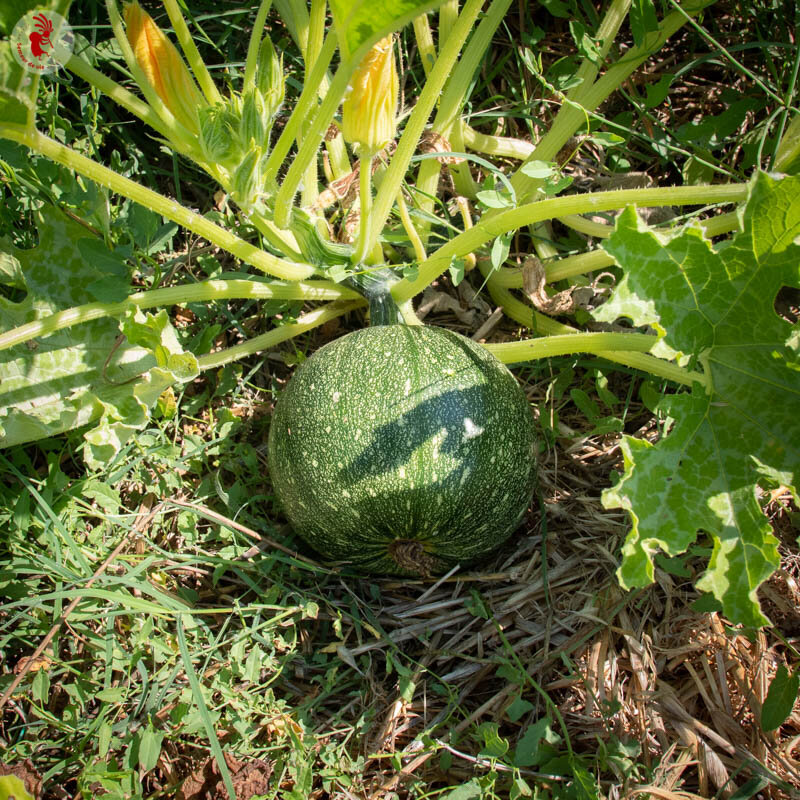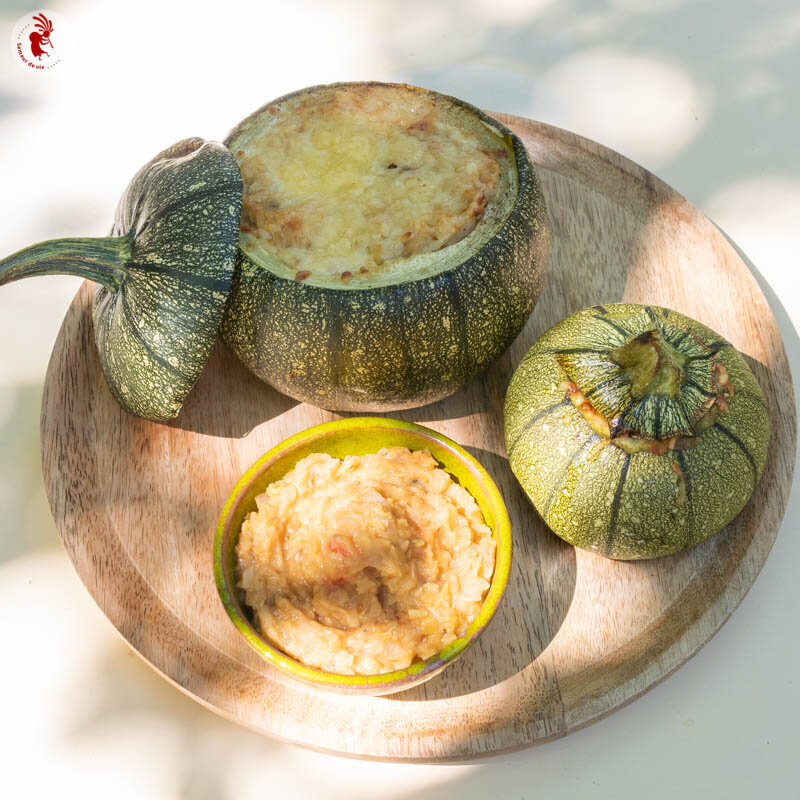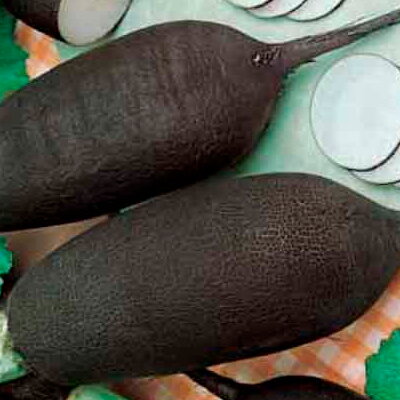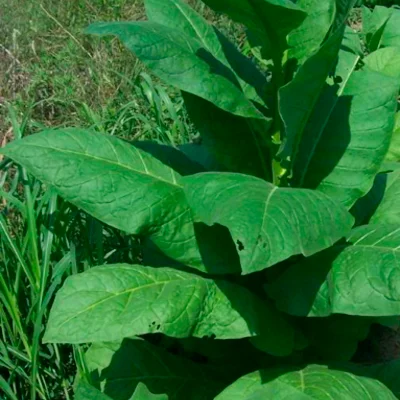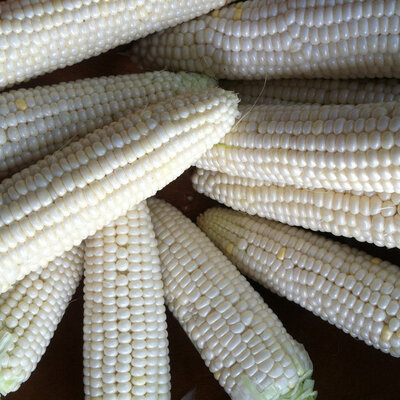Ronde de Nice - Zucchini
This old variety produces numerous round fruits with fine, slightly protruding ribs, dark green in color, punctuated with white. They can weigh from 600 g to 1.5 kg and keep for several months. The Nice round zucchini is a vigorous grower in the vegetable garden.
What are the characteristics of the Nice zucchini?
Nice zucchini, Cucurbita pepo, is a bushy variety of fruiting vegetable that appeared in the south of France in 1903. This mid-season crop produces round, dark-green, white-flecked fruits measuring 20 to 30 cm in length, with tender, melting flesh. Plants cover the ground up to 1 m in surface area. The broad, angular leaves are downy and slightly thorny, as are the stems. These round zucchinis, ideal for stuffing, can be harvested immature. The large orange flowers are edible in salads or fritters, but once picked, they won't bear fruit.
How do I grow Nice round zucchinis?
Nice round zucchini seedlings can be sown from February to May in pots of 2-3 seeds, and from March to June in the open ground.
Sowing in pots should be done 2 to 3 weeks before transplanting. Be careful not to sow zucchini seeds too early in the season, in which case the roots will become fibrous, making growth difficult in the garden. Seeds should be kept moist and warm, at a temperature of between 18 and 20°C, until they emerge.
To sow directly in the garden, wait until the last frosts have passed and choose a sunny spot. In the garden, prepare holes filled with compost or organic matter 2 weeks in advance, spaced 1 m apart in all directions, to accommodate the zucchini plants or seeds. To encourage height growth and free up ground space, install sturdy supports when transplanting the plants. Water regularly afterwards, avoiding touching leaves and flowers.
Include companion plants in your planting to encourage flower development and keep pests at bay. Choose basil or beans, for example.
When to harvest Nice zucchinis?
These squashes are harvested between July and November, before the first frosts. Drying out of the stalks indicates that the fruit is ready to detach from the plant. Be careful not to tear off the squash, but cut as close as possible to the stem, 10 cm above the stalk.
This variety of vegetable keeps for 4 to 9 months in a ventilated, dry place, at a temperature of between 10 and 12°C. Elevate squash on crates, well spaced out and tail up. They can also be frozen for up to a year, after slicing and cooking.
Nice round zucchinis are harvested from May to October. It's best to pick them immaturely, when they measure 10 cm in diameter. Be careful not to tear them off, but cut as close as possible to the stem, 10 cm above the stalk. The flowers can also be picked and eaten.
How to store Nice zucchinis?
For optimum storage, these vegetable varieties should be harvested ripe and firm. Store in a well-ventilated, dry place, at a temperature of between 10 and 12°C. Elevate zucchini on crates, well spaced out and tail up. They can also be frozen for up to a year, after slicing and cooking. Their round shape makes them ideal for stuffed or pan-fried zucchinis when not being used for decorative purposes.
These products may also be of interest to you
in the ground, in bucket
Sow in pots at 18-20°C, 2 to 3 weeks before planting. Transplant with the root ball into the ground, after the last frosts, at a distance of 1 m in all directions. For sowing directly in the ground, sow after the last frosts when the soil is well warmed. Sow or transplant in planting holes filled with compost and prepared 2 weeks in advance.
March, April, May
April, May, June
May, June, July, August, September, October
in the ground, in the greenhouse
sunny
medium
humus
rich, furniture, heavy
Cucurbita pepo
mid-season
From 500 to 1500 g
12 seeds
round
farm
Dark green
edible
From 45 to 100 cm
From 20 to 30 cm
bushy
France
1903
This ancient variety originates from the south of France. It was first mentioned in 1903.
very rich in mineral salts. It has depurative, diuretic, laxative, nutritive and refreshing properties. It is rich in fiber and offers a balance between sodium and potassium, giving it diuretic properties. It is also a source of vitamin B9 and vitamin C, one known for its influence on cell renewal and the other for its positive impact on the immune and nervous systems. It also contains antioxidants, major factors in the fight against free radicals and the maintenance of good health.



